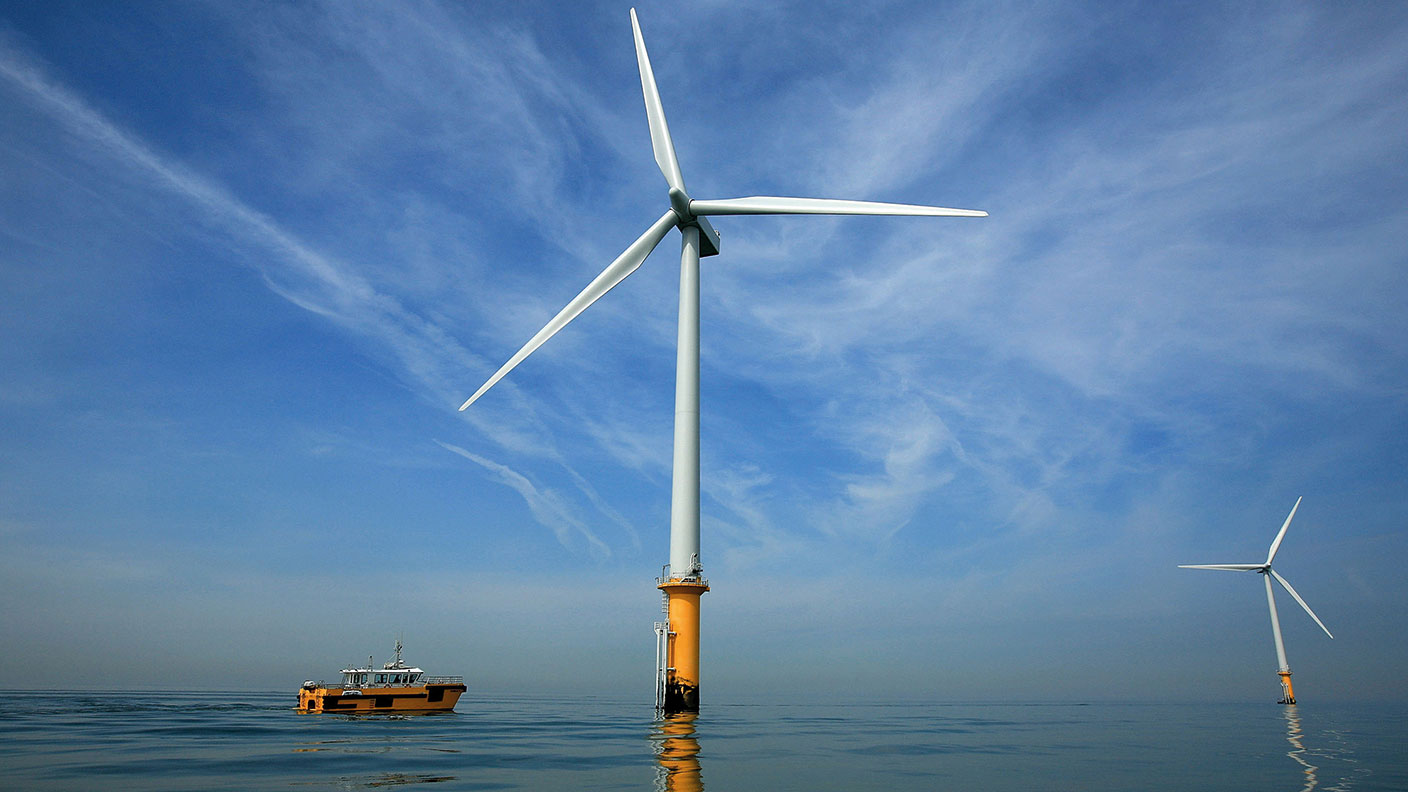Britain’s green revolution: can we become carbon neutral by 2050?
The prime minister is laying out plans that will see carbon emissions reduced to net zero by 2050. Do they make sense?

What goals has the UK set out?
Britain is not known for great acts of dirigiste planning, but when it comes to tackling climate change it has – to remarkably little fanfare amid the noisy political dramas of the last few years – set out strikingly ambitious climate goals and a route map to achieving them. Margaret Thatcher’s self-appointed mission, in the late 1980s, to put the nascent issue of climate change at the top of the global agenda, is today regarded as a major part of her legacy by some historians and environmentalists. By the same token – in the spirit of crystal-ball-gazing – it’s possible to speculate that Theresa May’s much briefer and more unhappy period in government will be remembered for its revolutionary commitment to making the UK a net-zero carbon emitter by 2050.
What have we committed to?
A few weeks before May stepped down in the summer of 2019, the UK became the first major economy to pass legislation binding itself to achieving net-zero carbon (and other greenhouse gas) emissions by mid-century. We did this in the form of a statutory amendment to the Climate Change Act 2008, acting on the recommendations of the Committee on Climate Change (a government advisory panel of climatologists and economists chaired by the ex-Tory environment minister John Gummer, now Lord Deben). At the time, plenty scoffed that the move was pointless and even self-harming without a similar commitment by other nations. But since then, many others have followed – first the EU and more recently South Korea and Japan. China has said it can follow by 2060.
But is it remotely feasible?
That depends on two things. First, whether a wholesale shift away from fossil fuels is possible in the country that spawned the industrial revolution and was once the world’s largest consumer of coal. And second, whether the nascent technologies of carbon capture, utilisation and storage can develop sufficiently rapidly to offset ongoing emissions. The biggest chunk of UK emissions (28%) comes from transport, mostly cars. Earlier this year the Johnson government gave the motor industry a jolt by bringing forward the ban on sales of new petrol, diesel and hybrid cars (including plug-in hybrids) to 2035; previously it was 2040. But unless hydrogen fuel-cell technology advances far more rapidly than most motor industry analysts expect, that is not credible without investing in electricity-charging infrastructure (millions of charging points costing tens of billions of pounds) and also beefing up the UK’s electricity grid and power-generation infrastructure to meet the new demand (at a cost of another £48.5bn, reckons ScottishPower). Of course, transport is just one of the many challenges involved.
MoneyWeek
Subscribe to MoneyWeek today and get your first six magazine issues absolutely FREE

Sign up to Money Morning
Don't miss the latest investment and personal finances news, market analysis, plus money-saving tips with our free twice-daily newsletter
Don't miss the latest investment and personal finances news, market analysis, plus money-saving tips with our free twice-daily newsletter
What are the others?
Heating buildings accounts for 19% of UK carbon emissions. Weaning tens of millions of households off gas boilers – in favour of either hydrogen cells or heat pumps run on electricity – will be difficult and expensive. Power generation accounts for 16% of emissions: electricity will need to continue getting cleaner (renewables) and more abundant (which could require boosting nuclear power). Industry accounts for 23% of emissions and even if electricity generation were to become 100% renewables, carbon capture will be crucial in hitting net-zero because some heavy industries (such as steel, petrochemicals and cement) will continue to produce a lot of carbon dioxide.
Is wind power the answer?
A shift to renewables will not in itself create a decarbonised economy (for the reasons discussed above), but it is necessary – as Boris Johnson recently recognised. Britain is not blessed with the sunshine needed to power a significant solar-energy industry (a sector that will play a key role elsewhere), but it does have natural advantages when it comes to wind, including the fact that parts of the North Sea are relatively shallow, making turbines easier to install. Wind power is already a massive UK success story, fostered by the government’s strategy (since 2013) of attracting investment via a contracts for difference system of granting licences and subsidies based on future returns. A combination of scaling up, engineering progress and growing confidence among investors has pushed down costs and turned the UK into the biggest offshore wind market in the world (albeit not a significant player in the construction of turbines). Boosting wind power further – growing the sector about fourfold to 40 gigawatts of electricity a year by 2030, a ten gigawatt increase on the existing goal– is step one in the PM’s ten-point plan for the UK’s “green revolution”.
What are the other steps?
The rest of the plan is due to be unveiled imminently and is expected to include detail on plans for fostering hydrogen power and carbon capture and storage. Other priorities are reported to include investment in small modular reactors; a new focus on hydrogen-fuelled trucks, trains and aircraft; energy-efficient housing; and investment in synthetic fuels made by extracting carbon dioxide from the atmosphere and combining it with hydrogen produced from renewable energy. All this might sound more like a shopping list than a coherent plan, but it makes clear the direction of travel and the potential era-defining opportunities for investors in coming decades. The expansion of wind power alone will require £50bn in investment, according to Aurora Energy Research. In the long run, it is to be hoped, investing billions in green energy will be a boost to the UK economy rather than a drain on resources. This country is already a global leader in wind power, green finance and insurance, and dominates the manufacture of electric engines. Looking ahead to the next 20 years, challenges abound, but there are also plenty of reasons to be cheerful.
Get the latest financial news, insights and expert analysis from our award-winning MoneyWeek team, to help you understand what really matters when it comes to your finances.
Simon Wilson’s first career was in book publishing, as an economics editor at Routledge, and as a publisher of non-fiction at Random House, specialising in popular business and management books. While there, he published Customers.com, a bestselling classic of the early days of e-commerce, and The Money or Your Life: Reuniting Work and Joy, an inspirational book that helped inspire its publisher towards a post-corporate, portfolio life.
Since 2001, he has been a writer for MoneyWeek, a financial copywriter, and a long-time contributing editor at The Week. Simon also works as an actor and corporate trainer; current and past clients include investment banks, the Bank of England, the UK government, several Magic Circle law firms and all of the Big Four accountancy firms. He has a degree in languages (German and Spanish) and social and political sciences from the University of Cambridge.
-
 The rise and fall of Nicolás Maduro, Venezuela's ruthless dictator
The rise and fall of Nicolás Maduro, Venezuela's ruthless dictatorNicolás Maduro is known for getting what he wants out of any situation. That might be a challenge now
-
 Polar Capital: a cheap, leveraged play on technology
Polar Capital: a cheap, leveraged play on technologyPolar Capital has carved out a niche in fund management and is reaping the benefits
-
 Vaccines inject billions into Big Pharma – how to profit from the sector
Vaccines inject billions into Big Pharma – how to profit from the sectorThe vaccines subsector received a big fillip from Covid, but its potential extends far beyond combating pandemics. Here's what it means for investors
-
 'Investors should keep putting their trust in investment trusts'
'Investors should keep putting their trust in investment trusts'Interview Peter Walls, manager of the Unicorn Mastertrust fund, analyses investment trusts in a conversation with Andrew Van Sickle
-
 Monks Investment Trust is worthy of the spotlight
Monks Investment Trust is worthy of the spotlightMonks Investment Trust, a global growth trust, sits in the shadow of its stablemate, Scottish Mortgage. But its record warrants attention, says Max King
-
 New year, same market forecasts
New year, same market forecastsForecasts from banks and brokers are as bullish as ever this year, but there is less conviction about the US, says Cris Sholto Heaton
-
 'Expect more policy U-turns from Keir Starmer'
'Expect more policy U-turns from Keir Starmer'Opinion Keir Starmer’s government quickly changes its mind as soon as it runs into any opposition. It isn't hard to work out where the next U-turns will come from
-
 Why does Donald Trump want Venezuela's oil?
Why does Donald Trump want Venezuela's oil?The US has seized control of Venezuelan oil. Why and to what end?

